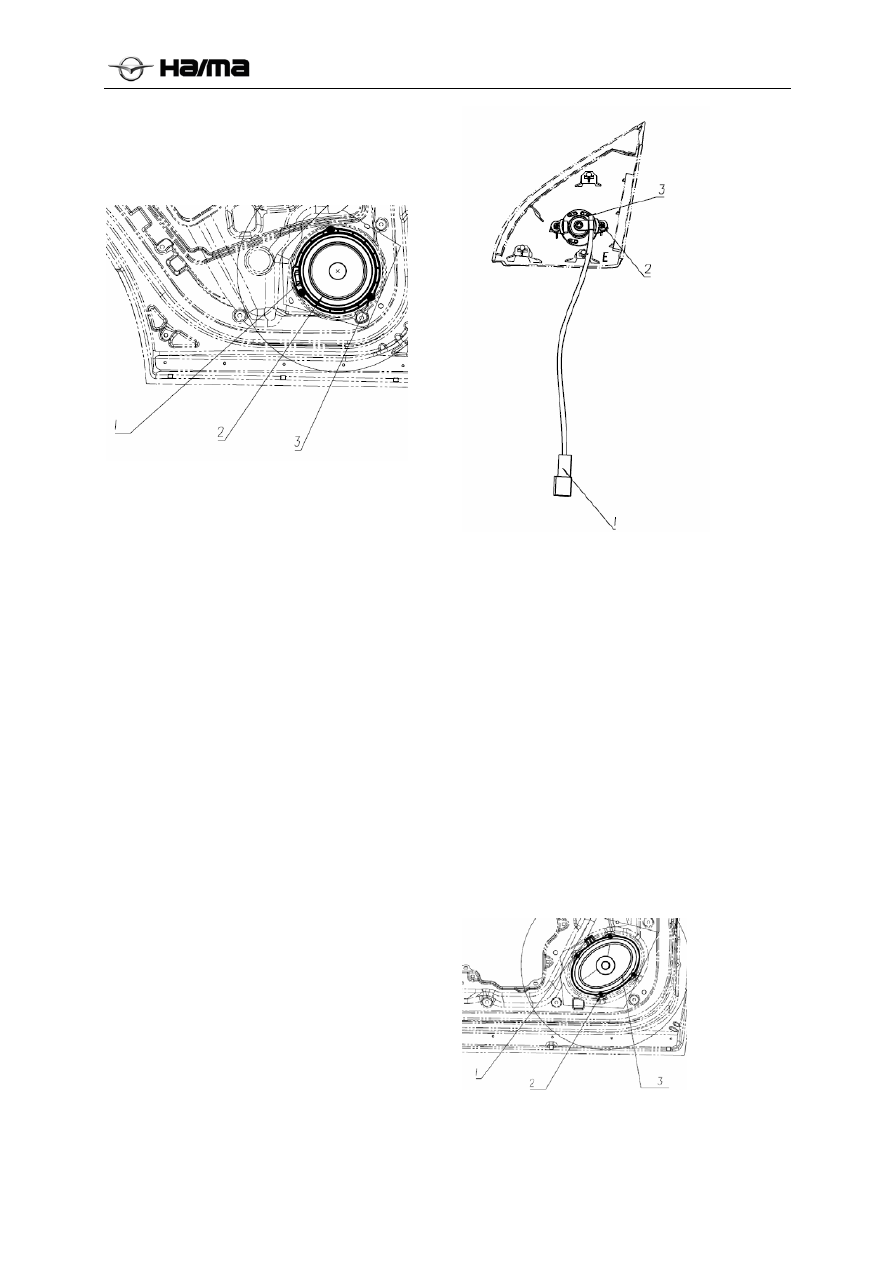Haima S5. A/C, Restraint System, Body Accessories, Electrical System. Manual - part 9

Electrical System 3D-32
Unscrew three mounting screws from the
speaker 3.
Remove the connector 1.
Remove the speaker 2 .
Installation Procedure
1. Connect the speaker power plug 1.
2. Tighten the mounting screws 3.
3. Install the rear door trim plate by referring to
the removal method of the door inner trim
plate.
4. Connect the negative cable of the battery.
Removal Procedure of Tweeter
1. Disconnect the negative cable of the battery.
2. Open the front door trim triangle.
3. Remove the tweeter from the front door trim
triangle.
Remove the connector 1.
Unscrew the mounting screws from the
tweeter 2.
Remove the tweeter 3 .
Installation Procedure
1. Install the tweeter on the front door trim
triangle with two mounting screws.
2. Connect the tweeter plug.
3. Connect the negative cable of the battery.
Removal Procedure of Front Door
Speaker
1. Disconnect the negative cable of the battery.
2. Remove the front door trim plate by referring
to the removal method of the door inner trim
plate.
3. Remove the speaker.
Unscrew four mounting screws from the
speaker 2.
Remove the connector 1.
Remove the speaker 3.
Installation Procedure
1. Connect the speaker power plug .